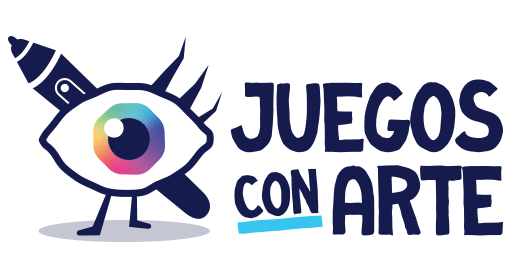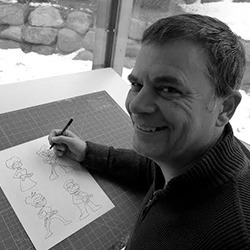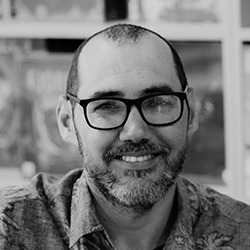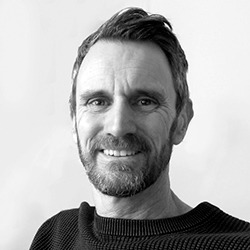
Empezamos por todo lo alto la nueva temporada de entrevista, he cumplido el sueño de entrevistar al gran artista polaco Jakub Różalski. Creador del universo «1920+«, el cual inspiró a Jamey Stegmaier para la creación del juego de mesa Scythe y recientemente su secuela Expediciones.
Jakub viene a presentarnos su mundo «1920+» y hablarnos sobre la creación de Scythe y Expediciones.
Disfruta de la entrevista, no olvides compartirla con tus amigos si te ha gustado 😉.
ENG | Welcome Jakub, for us it is a dream come true to have you on the blog, could you tell us a little about yourself and your professional career?
Thank you very much, the pleasure is all mine.I was born in Poland, grew up in a small village surrounded by forests, lakes and a rural atmosphere, during the interesting time of breakthrough and fall of communism. I have loved drawing and painting since I can remember. It was always my way of escaping and dealing with the reality of the world.
I grew up on VHS movies and arcade machines, I witnessed the birth of video games. I was also always interested in fantasy & science fiction, so it was rather the natural course of events. I have a fine art background and education, however, I would say that I’m self-taught.
I always read a lot of books, watched a lot of movies, old masters painting, I have always been passionate about history and fascinated by folk tales. All this certainly helped shape me as an artist. My work became popular a decade ago, thanks to the daily speed painting group on facebook and an article on Kotaku. Around this time I started working on the world of 1920+, then there was Scythe, and the rest is history.
ESP | Bienvenido Jakub, para nosotros es un sueño hecho realidad tenerte en el blog, ¿podrías hablarnos un poco de ti y de tu trayectoria profesional?
Muchas gracias, el placer es todo mío. Nací en Polonia, crecí en un pequeño pueblo rodeado de bosques, lagos y un ambiente rural, durante la interesante época de la ruptura y caída del comunismo. Me encanta dibujar y pintar desde que tengo uso de razón. Siempre fue mi forma de escapar y enfrentarme a la realidad del mundo.
Crecí con películas en VHS y máquinas recreativas, fui testigo del nacimiento de los videojuegos. Siempre me interesaron la fantasía y la ciencia ficción, así que fue el curso natural de los acontecimientos. Tengo formación y educación en bellas artes, pero diría que soy autodidacta.
Siempre he leído muchos libros, visto muchas películas, pintado cuadros de maestros antiguos, siempre me ha apasionado la historia y me han fascinado los cuentos populares. Sin duda, todo esto me ayudó a formarme como artista. Mi trabajo se hizo popular hace una década, gracias al grupo daily speed painting de facebook y a un artículo en Kotaku. Por aquel entonces empecé a trabajar en el mundo de 1920+, luego vino Scythe, y el resto es historia.
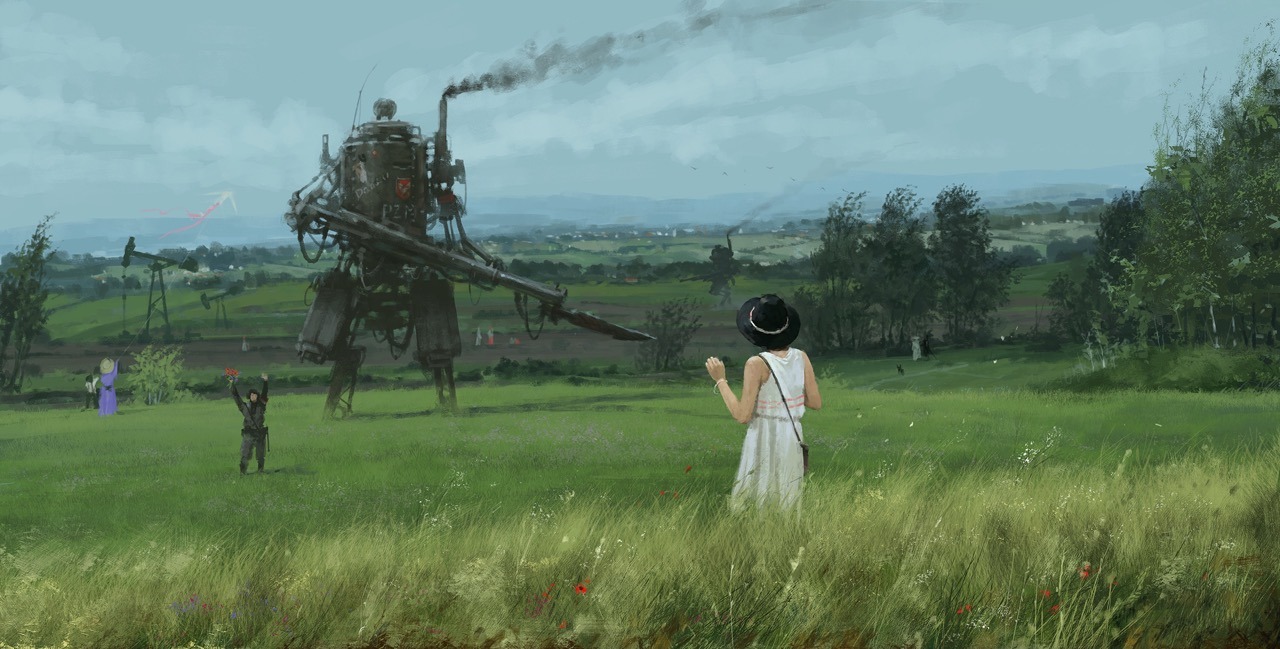
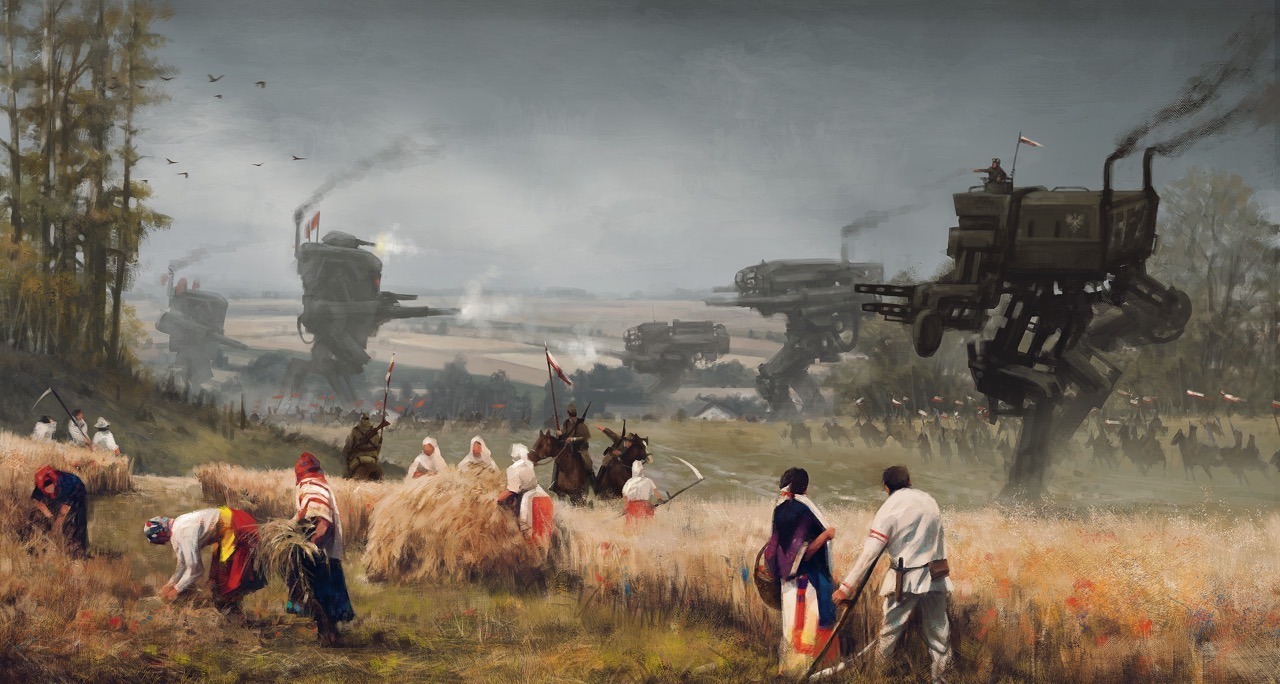

ENG | Although most of your works are made with digital techniques, your style reminds us of the more traditional pictorial art, how is your creative process when creating a work?
For many years I mainly created analog, I’m simply that old hahaha 🙂 then I combined techniques, scanning drawings and applying color digitally. I still remember when I painted with a mouse, I didn’t have a tablet.
Currently, I mainly work and paint digitally, it’s simply more efficient and saves a lot of time. You don’t have to wait for the paint to dry, it’s easier and faster to make changes in the painting, etc. I also don’t need a special place for easel and paint, what I need is a tablet and I can take anywhere.
I prefer digital painting because it gives more room for experimentation, bold decisions and creative improvisation, you don’t need to plan so much. But regardless of the technique, I try to make my works have the same character and style, so that the viewer cannot distinguish whether it is digital or traditional painting. What I think I managed to achieve.
ESP | Aunque la mayoría de tus obras están realizadas con técnicas digitales, tu estilo nos recuerda al arte pictórico más tradicional, ¿cómo es tu proceso creativo a la hora de crear una obra?
Durante muchos años creé principalmente analógico, simplemente soy así de viejo jajaja 🙂 luego combiné técnicas, escaneando dibujos y aplicando color digitalmente. Todavía recuerdo cuando pintaba con un ratón, no tenía tableta.
Actualmente trabajo y pinto principalmente digitalmente, simplemente es más eficiente y ahorra mucho tiempo. No tienes que esperar a que se seque la pintura, es más fácil y rápido hacer cambios en el cuadro, etc. Tampoco necesito un lugar especial para el caballete y la pintura, lo que necesito es una tableta y me la puedo llevar a cualquier sitio.
Prefiero la pintura digital porque da más margen para la experimentación, las decisiones audaces y la improvisación creativa, no necesitas planificar tanto. Pero independientemente de la técnica, intento que mis obras tengan el mismo carácter y estilo, para que el espectador no pueda distinguir si es pintura digital o tradicional. Lo que creo que he conseguido.
ENG | You are the creator of 1920+, a universe where the traditional clashes with the modernity of the time. Can you introduce us to your impressive world?
Sure, with pleasure! I don’t like to talk about myself, but talking about the worlds and stories I create, it’s a completely different story 🙂
So, in the 1920+ world, I mixed everything that I like & love the most and what I’m afraid of, my experiences, childhood, passion for history and movies. Alternative history of my favorite time period, countryside & rural atmosphere, XIX century paintings, extraordinary giant machines, wild nature & animals. I love the beginning of the twentieth century period, when tradition clashed with modernity, and the world was still full of mysteries and secrets.
I often imagine people of that period, how they must have felt and what they thought. Like people who spent and worked their entire lives in a small village, with no access to information or any photos, and then seeing first tanks or planes! I think you can also find there some kind of longing for the world and life closer to nature which has been aggressively taken by technology and civilization.
Also, I wanted to show war from the perspective of regular, normal people, maybe not so epic and heroic. The world was changing very quickly at that time. On the battlefields you could still see melee weapons, cavalry, as well as the first tanks and planes, crazy when you think about it!
I wanted to combine the classic motifs of cavalry, daily life in the countryside, realistic painting of the late nineteenth and early twentieth centu climates with my own concepts, ideas and stories. Tell something of the history and culture of my motherland and Europe in an original, alternative and interesting way for an audience, and for me as an artist.
ESP | Eres el creador de 1920+, un universo donde lo tradicional choca con la modernidad de la época. ¿Puede presentarnos su impresionante mundo?
Claro, ¡con mucho gusto! No me gusta hablar de mí, pero hablar de los mundos y las historias que creo, es una historia completamente diferente 🙂
Así que, en el mundo de 1920+, mezclé todo lo que más me gusta y amo y lo que me da miedo, mis experiencias, mi infancia, mi pasión por la historia y el cine. Historia alternativa de mi época favorita, campo y ambiente rural, pinturas del siglo XIX, extraordinarias máquinas gigantes, naturaleza salvaje y animales. Me encanta la época de principios del siglo XX, cuando la tradición chocaba con la modernidad y el mundo aún estaba lleno de misterios y secretos.
A menudo imagino a la gente de aquella época, cómo debían sentirse y qué pensaban. Como las personas que pasaban y trabajaban toda su vida en un pequeño pueblo, sin acceso a la información ni a ninguna foto, ¡y luego veían por primera vez tanques o aviones! Creo que también se puede encontrar ahí una especie de añoranza del mundo y de la vida más cercana a la naturaleza que ha sido tomada agresivamente por la tecnología y la civilización.
Además, quería mostrar la guerra desde la perspectiva de la gente normal y corriente, quizá no tan épica y heroica. El mundo estaba cambiando muy deprisa en aquella época. En los campos de batalla aún se podían ver armas cuerpo a cuerpo, caballería, así como los primeros tanques y aviones, ¡una locura si lo piensas!
Quería combinar los motivos clásicos de la caballería, la vida cotidiana en el campo, la pintura realista de finales del siglo XIX y principios del XX con mis propios conceptos, ideas e historias. Contar algo de la historia y la cultura de mi patria y de Europa de una forma original, alternativa e interesante para el público y para mí como artista.
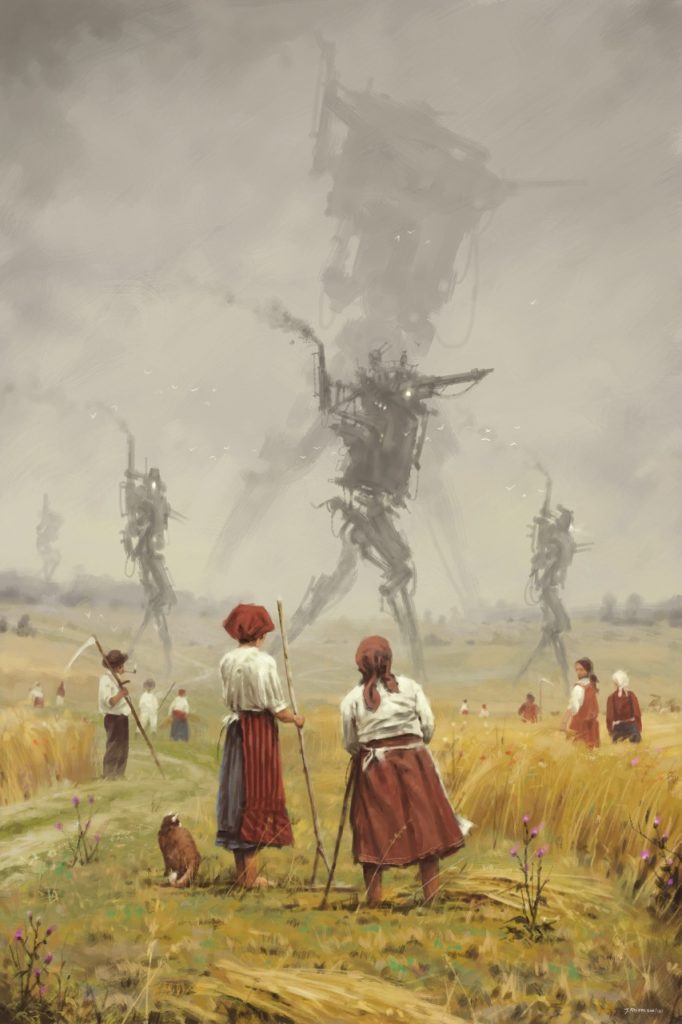

ENG | Your case is very special, since your 1920+ project inspired Jamey Stegmaier to create the Scythe board game. How did you feel when Jamey contacted you to create Scythe and what encouraged you to collaborate with him?
Yes, it was a huge and important milestone in my career. I quit my job and risked everything, before the Kickstarter campaign success was not certain and all I had were debts, lol. But it was worth it! Because from then on I could fully focus on my own projects, worlds and my own stories.
I’ve always been a big fan of board games, so Jamey didn’t have to convince me for long. At that time, Stonemaier was one of the pioneers of crowdfunding campaigns on Kickstarter, so I was very happy at the prospect of collaborating. Scythe turned out to be a huge success and helped to popularize the world of 1920+. We have been working together with Jamey for almost a decade! Time flies!
ESP | Tu caso es muy especial, ya que tu proyecto 1920+ inspiró a Jamey Stegmaier para crear el juego de mesa Scythe. Qué sentiste cuando Jamey se puso en contacto contigo para crear Scythe y qué te animó a colaborar con él?
Sí, fue un hito enorme e importante en mi carrera. Dejé mi trabajo y lo arriesgué todo, antes de que el éxito de la campaña de Kickstarter no fuera seguro y todo lo que tenía eran deudas, lol. Pero mereció la pena. Porque a partir de entonces pude centrarme plenamente en mis propios proyectos, mundos y mis propias historias.
Siempre he sido un gran fan de los juegos de mesa, así que Jamey no tuvo que convencerme durante mucho tiempo. Por aquel entonces, Stonemaier era uno de los pioneros de las campañas de crowdfunding en Kickstarter, así que me alegré mucho ante la perspectiva de colaborar. Scythe resultó ser un gran éxito y ayudó a popularizar el mundo de 1920+. Llevamos casi una década trabajando juntos con Jamey. ¡El tiempo vuela!

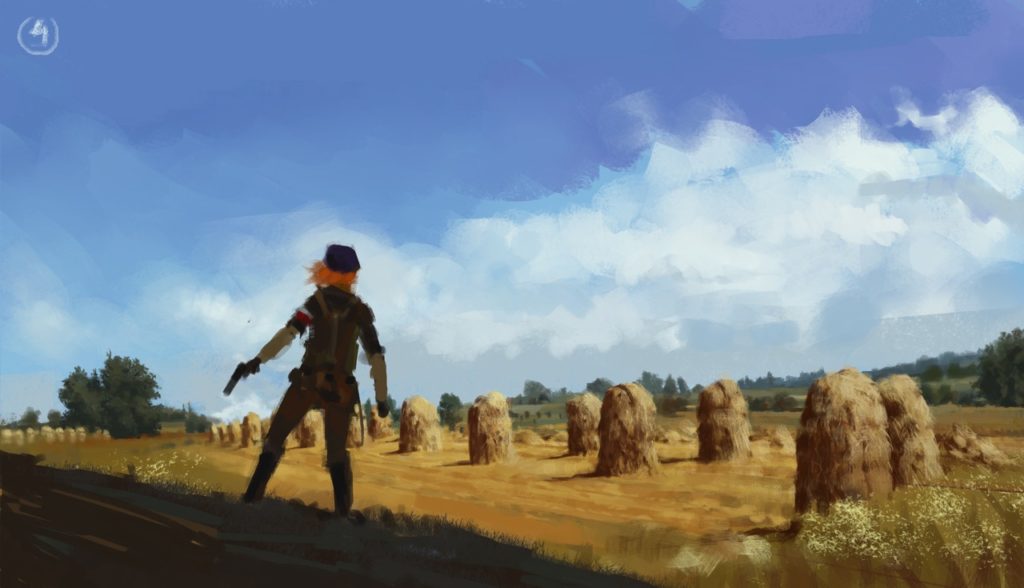
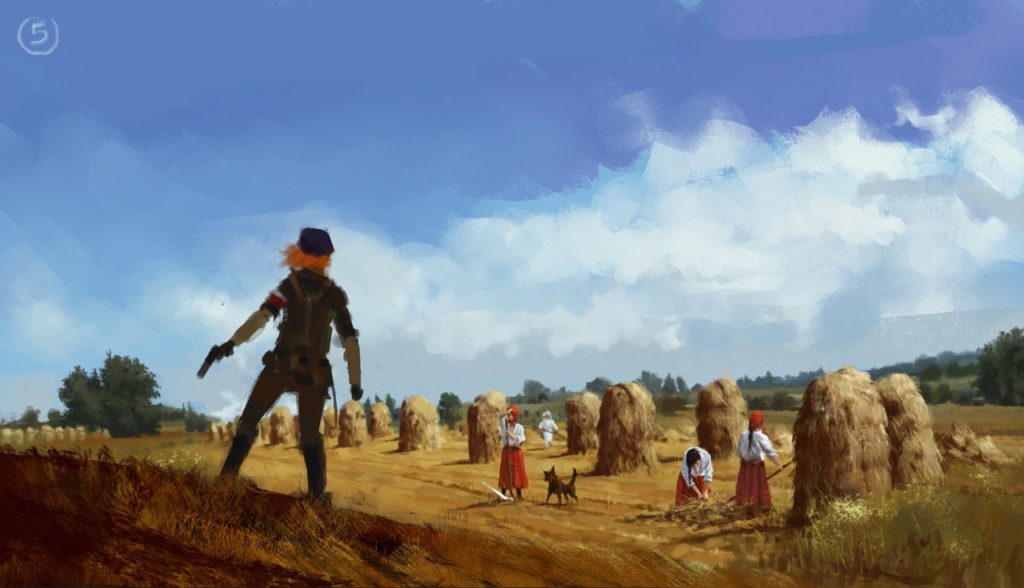
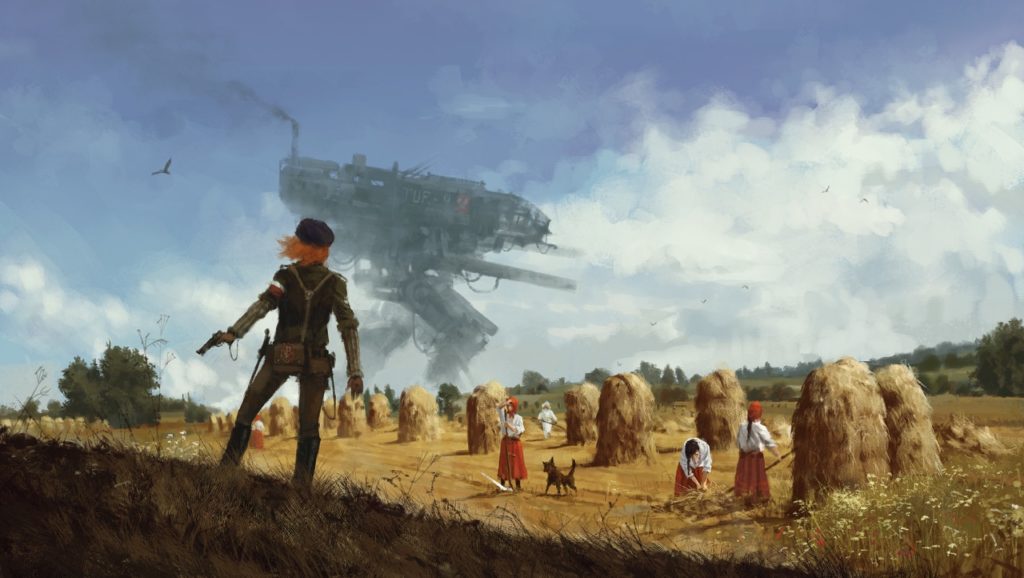
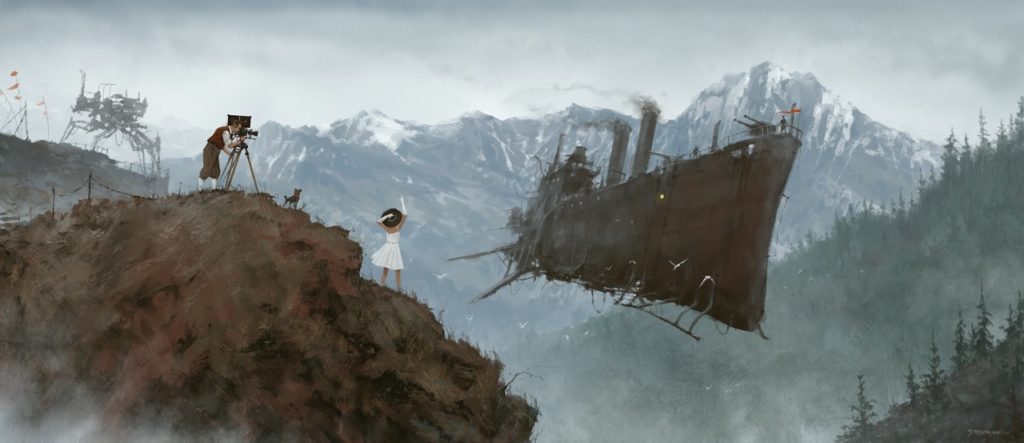
ENG | In 1920+ there were only Polish and Soviet armies, but for Scythe you had to expand the number of armies for the playability of the game, how was the documentation process to create these new factions and what were the reasons for choosing them?
Well, I always planned to expand the 1920+ universe, as it is an alternative world from the early 20th century. At first I created four factions, an alternative version of Poland, Bolshevik Russia, Deutsches Reich and Scandinavia. I really wanted to add something in dieselpunk vikings style. For Scythe, I created the Crimean Khanate, inspired by my wife, who is Tatar.
Then I started working on the concepts of Togawa Shogunate and Albion. I think it is a natural process that along with commercial success, the universe develops and grows. It was the same in the case of the world of 1920+.
ESP | En 1920+ sólo había ejércitos polacos y soviéticos, pero para Scythe tuviste que ampliar el número de ejércitos por la jugabilidad del juego, ¿cómo fue el proceso de documentación para crear estas nuevas facciones y cuáles fueron las razones para elegirlas?
Bueno, siempre planeé ampliar el universo 1920+, ya que se trata de un mundo alternativo de principios del siglo XX. Al principio creé cuatro facciones, una versión alternativa de Polonia, la Rusia bolchevique, el Deutsches Reich y Escandinavia. Tenía muchas ganas de añadir algo de estilo vikingo dieselpunk. Para Scythe, creé el Janato de Crimea, inspirado en mi mujer, que es tártara.
Luego empecé a trabajar en los conceptos de Togawa Shogunate y Albion. Creo que es un proceso natural que, junto con el éxito comercial, el universo se desarrolle y crezca. Lo mismo ocurrió con el mundo de 1920+.

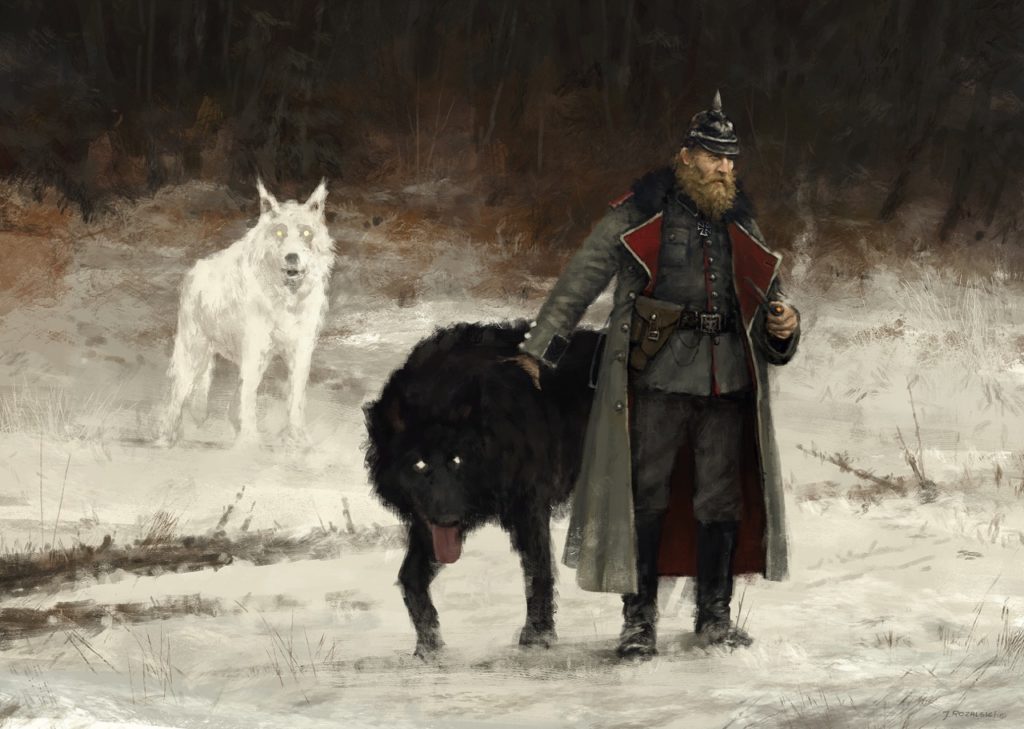
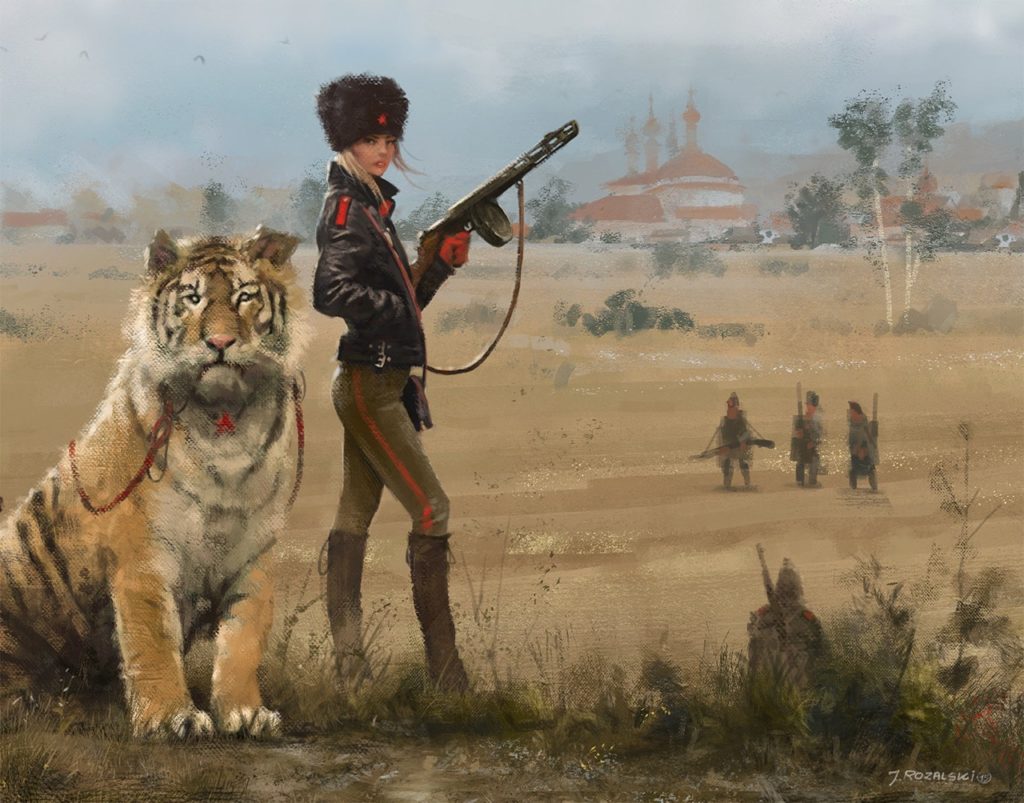
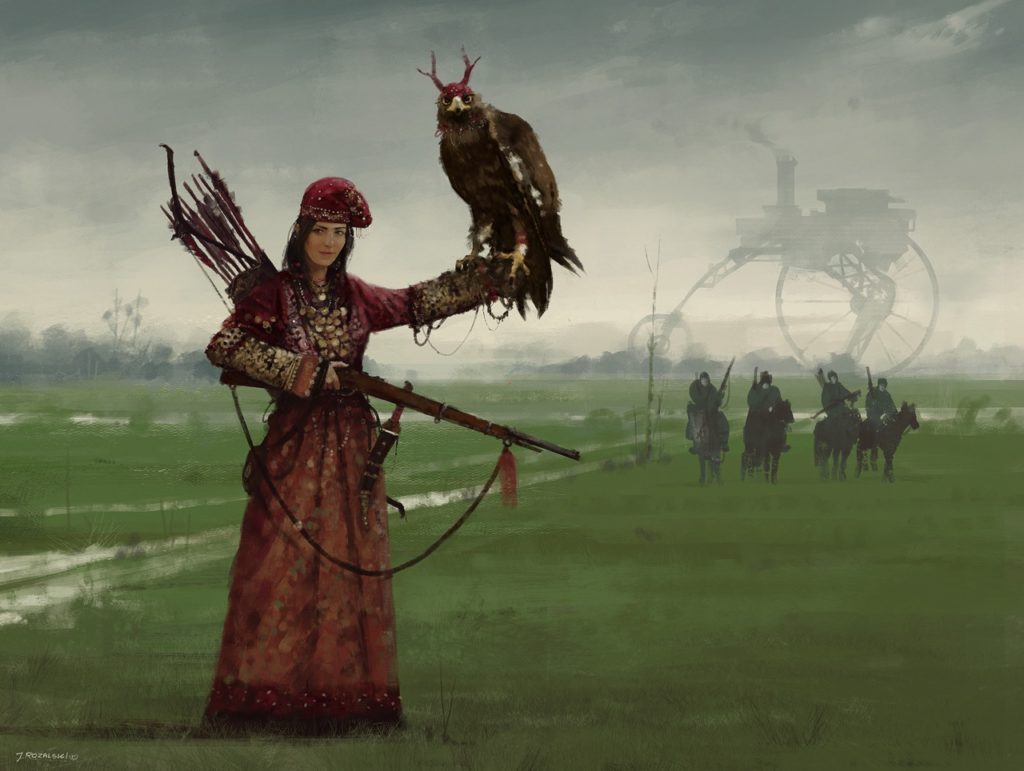
ENG | After the success of Scythe you collaborate again with Stegmaier to create Expeditions, a sequel that puts us on the way to Siberia, where the war is over but the mystery is still more alive than ever. How do you think your style and vision has evolved from Scythe to nowadays?
Expeditions is the next chapter in the history of the world of 1920+. I was always fascinated by the exploration of the Arctic and the period when the world was still full of mysteries and undiscovered places on the map. I also wanted to move away from the war aesthetic a bit and focus more on adventure and mystery with a stronger emphasis on storytelling.
The inspiration for this new plot and events for me was mainly the 1908 Tunguska event, ancient civilizations, ancient astronaut theories, books like In Desert and Wilderness by H.Sienkiewicz and movies I grew up with, like The Thing. In 2020, I started working on this new storyline and artworks for 1920+ world. And soon after, together with Jamey, we decided it was time for another game in the Scythe universe.When creating the stories and illustrations for Expeditions, I was simply trying to expand my alternate 1920+ world and add interesting new elements to it.
ESP | Tras el éxito de Scythe vuelves a colaborar con Stegmaier para crear el juego de mesa Expediciones, una secuela que nos pone en camino hacia Siberia, donde la guerra ha terminado pero el misterio sigue más vivo que nunca. ¿Cómo crees que ha evolucionado tu estilo y tu visión desde Scythe hasta hoy?
Expediciones es el siguiente capítulo de la historia del mundo de 1920+. Siempre me fascinó la exploración del Ártico y la época en que el mundo aún estaba lleno de misterios y lugares por descubrir en el mapa. También quería alejarme un poco de la estética bélica y centrarme más en la aventura y el misterio con un mayor énfasis en la narración.
Para mí, la inspiración para esta nueva trama y acontecimientos fue principalmente el suceso de Tunguska de 1908, civilizaciones antiguas, teorías sobre antiguos astronautas, libros como en «A través del Desierto y de la Selva» de H.Sienkiewicz y películas con las que crecí, como La Cosa. En 2020, empecé a trabajar en este nuevo argumento y en las ilustraciones para el mundo de 1920+. Y poco después, junto con Jamey, decidimos que había llegado el momento de crear otro juego en el universo de Scythe. Al crear las historias y las ilustraciones de Expeditions, simplemente intentaba ampliar mi mundo alternativo de 1920+ y añadirle nuevos elementos interesantes.
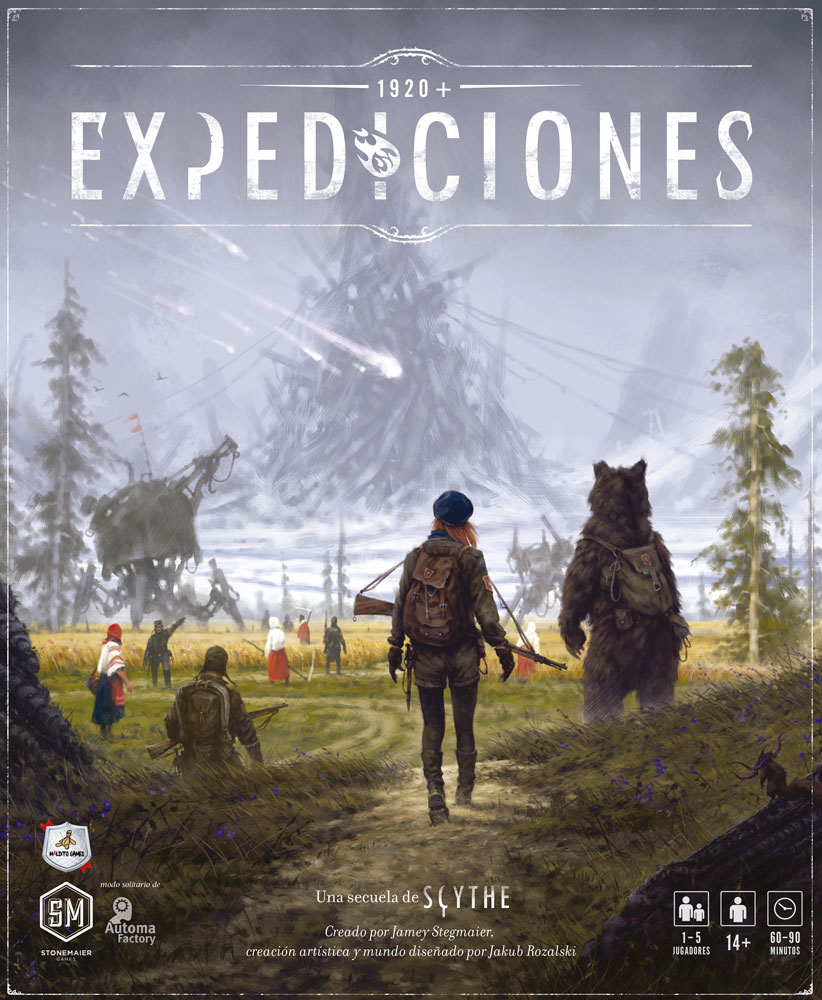
ENG | During the process of creating Expeditions, what parts were the most challenging and how did you solve them?
UI, icons and card design are always the most tedious. Not much fun compared to illustrations. But meteorites illustrations and cards were also quite challenging. There are five types of meteorites in the game, which differ in their properties and how they can be used by players. When creating illustrations for these cards, that influenced my decision to create them in a monochromatic color palette, reflecting the color of the specific meteorite. I think it came out quite interesting and at the same time it will make it easier for players to identify the cards of individual meteorites in the deck.
ESP | Durante el proceso de creación de Expediciones, ¿qué partes supusieron un mayor reto y cómo las resolvió?
La interfaz de usuario, los iconos y el diseño de tarjetas son siempre los más tediosos. No son tan divertidos como las ilustraciones. Pero las ilustraciones y las cartas de meteoritos también eran todo un reto. Hay cinco tipos de meteoritos en el juego, que difieren en sus propiedades y en cómo pueden ser utilizados por los jugadores. Al crear las ilustraciones para estas cartas, eso influyó en mi decisión de crearlas en una paleta de colores monocromática, que reflejara el color del meteorito específico. Creo que resultó bastante interesante y, al mismo tiempo, facilitará a los jugadores la identificación de las cartas de cada meteorito en el mazo.
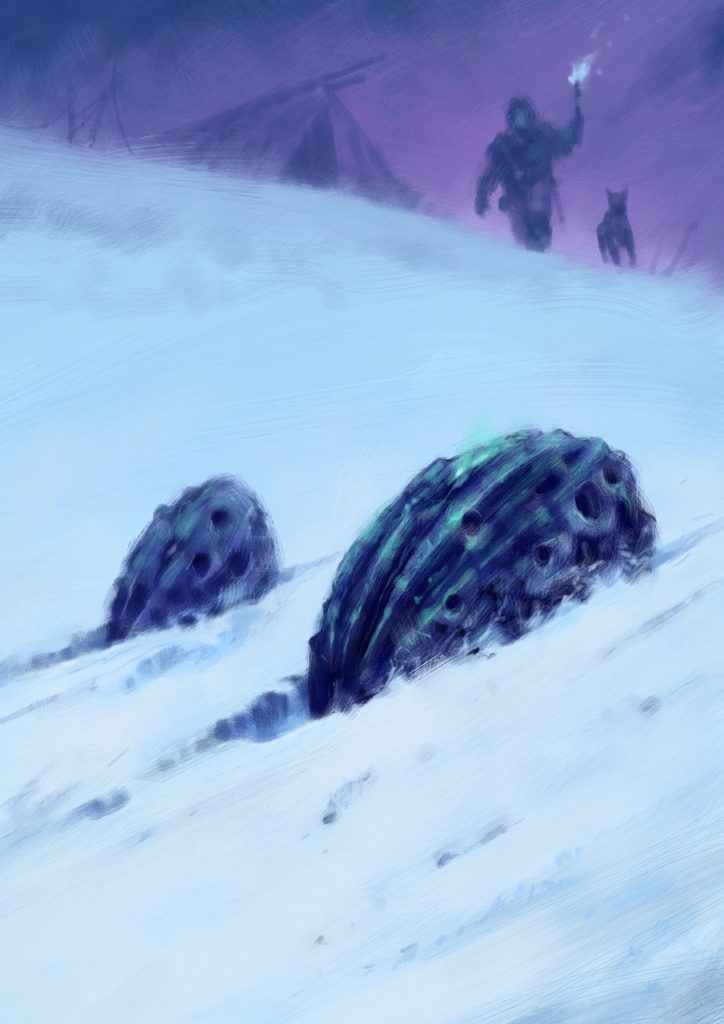
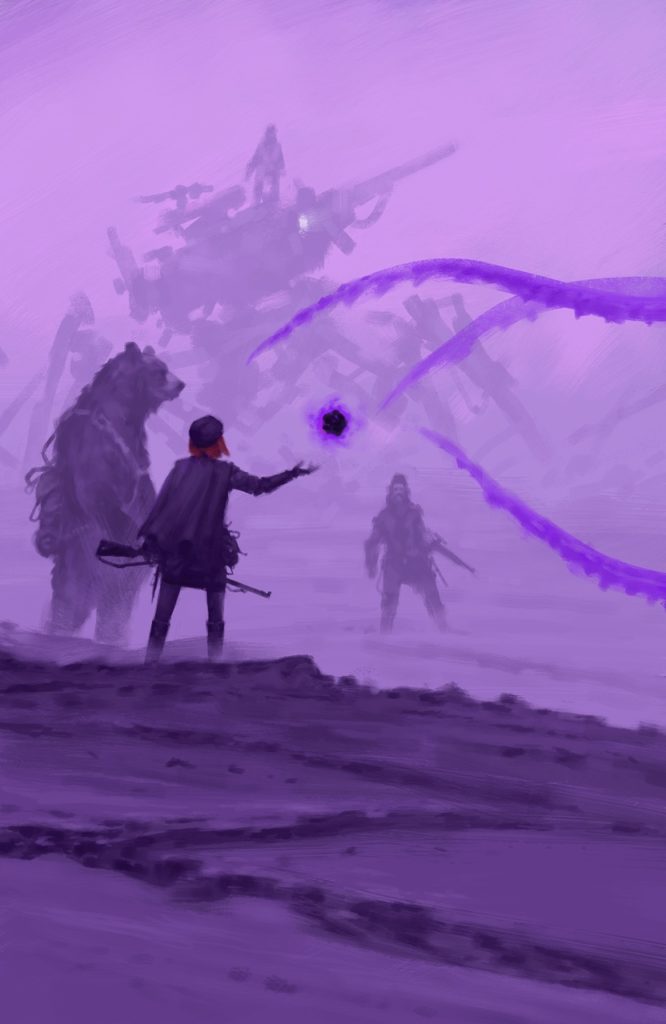
ENG | Looking at the tiles of the game we can see how the key moments in Dr. Tarkosky’s quest become more and more sinister. What inspired you to create such Lovecraftian beings? Whose idea was it?
As I mentioned, I have always been fascinated by Arctic exploration and theories about lost ancient civilizations, Lovecraft certainly had a great influence on me. But rather more through movies, games and comics.
I really wanted to create an experience of journey, exploration and the anxiety, presence of something dark and otherworldly. Dr. Tarkowski is a direct reference and an alternative story of Stanisław Tarkowski from In Desert and Wilderness by H.Sienkiewicz, a book that I was fascinated by as a child. I wanted the journey to become darker and more dangerous while revealing more and more stories, as our heroes travel north. I also really wanted to paint some monsters and clash them with 1920+ mechas.
ESP | Observando las fichas del juego podemos ver cómo los momentos clave de la búsqueda del Dr. Tarkosky se vuelven cada vez más siniestros. ¿En qué se inspiró para crear unos seres tan lovecraftianos? ¿De quién fue la idea?
Como ya he mencionado, siempre me han fascinado la exploración del Ártico y las teorías sobre antiguas civilizaciones perdidas, Lovecraft sin duda tuvo una gran influencia en mí. Pero más bien a través de películas, juegos y cómics.
Realmente quería crear una experiencia de viaje, exploración y la ansiedad, la presencia de algo oscuro y de otro mundo. El Dr. Tarkowski es una referencia directa y una historia alternativa de Stanisław Tarkowski de «A través del Desierto y de la Selva» de H. Sienkiewicz, un libro que me fascinaba de niño. Quería que el viaje se volviera más oscuro y peligroso a la vez que revelara más y más historias, a medida que nuestros héroes viajan hacia el norte. También tenía muchas ganas de pintar algunos monstruos y hacerlos chocar con mechas de 1920+.
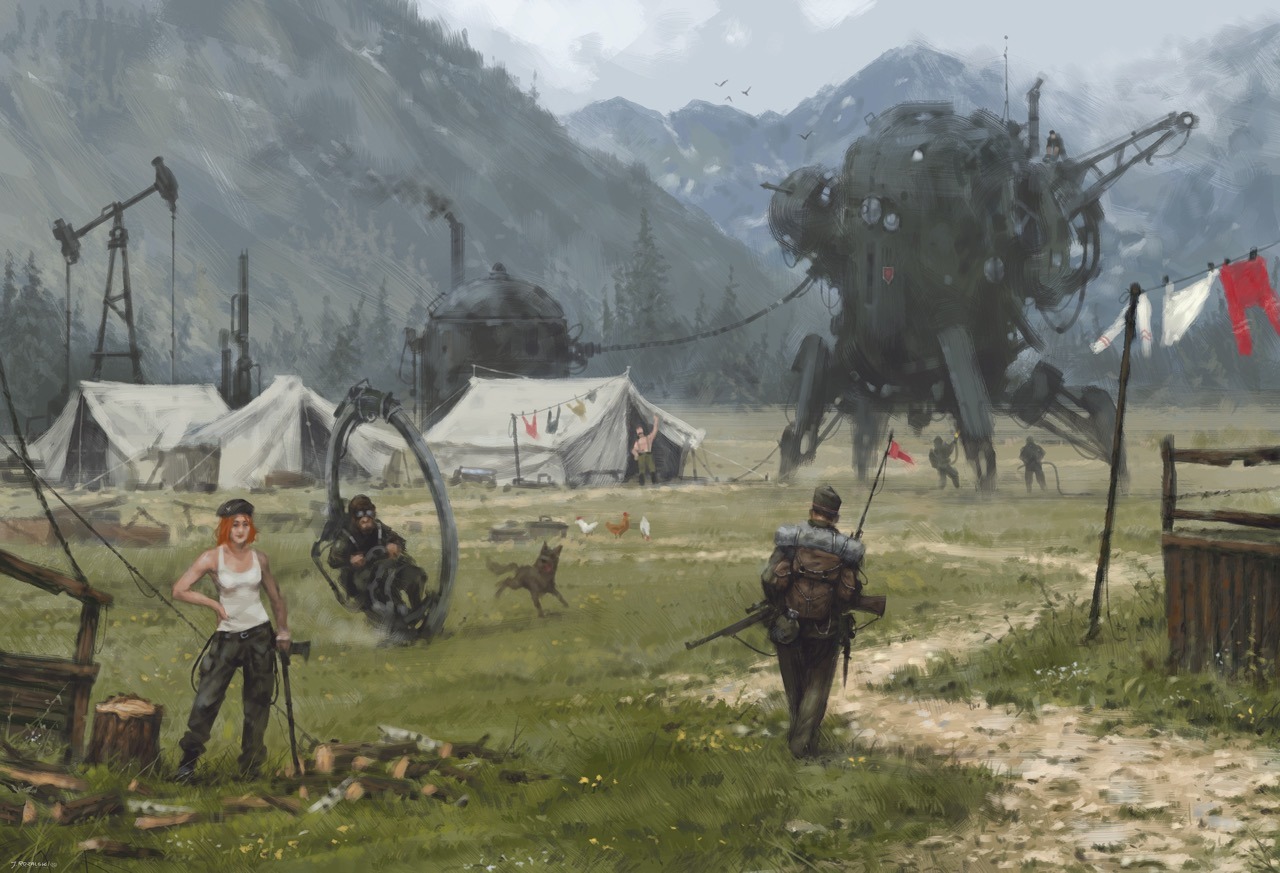
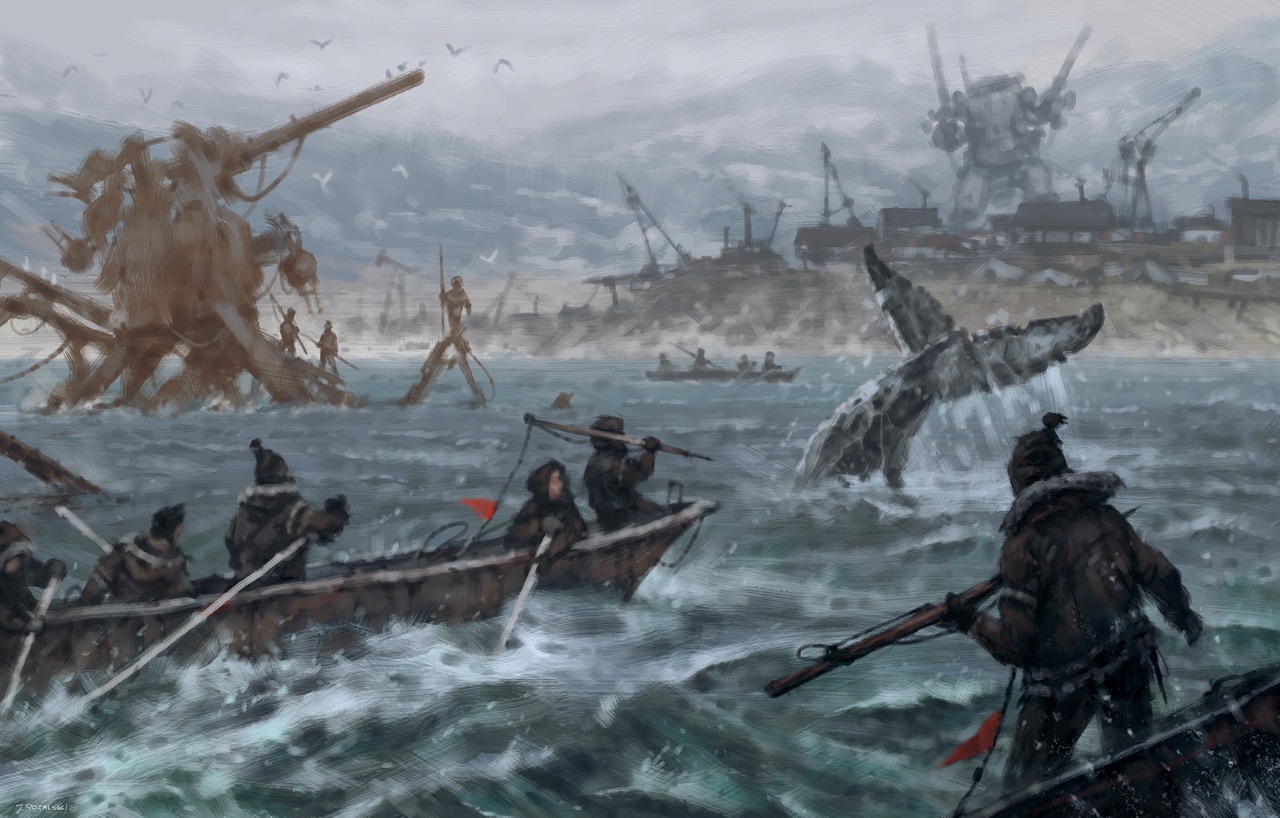
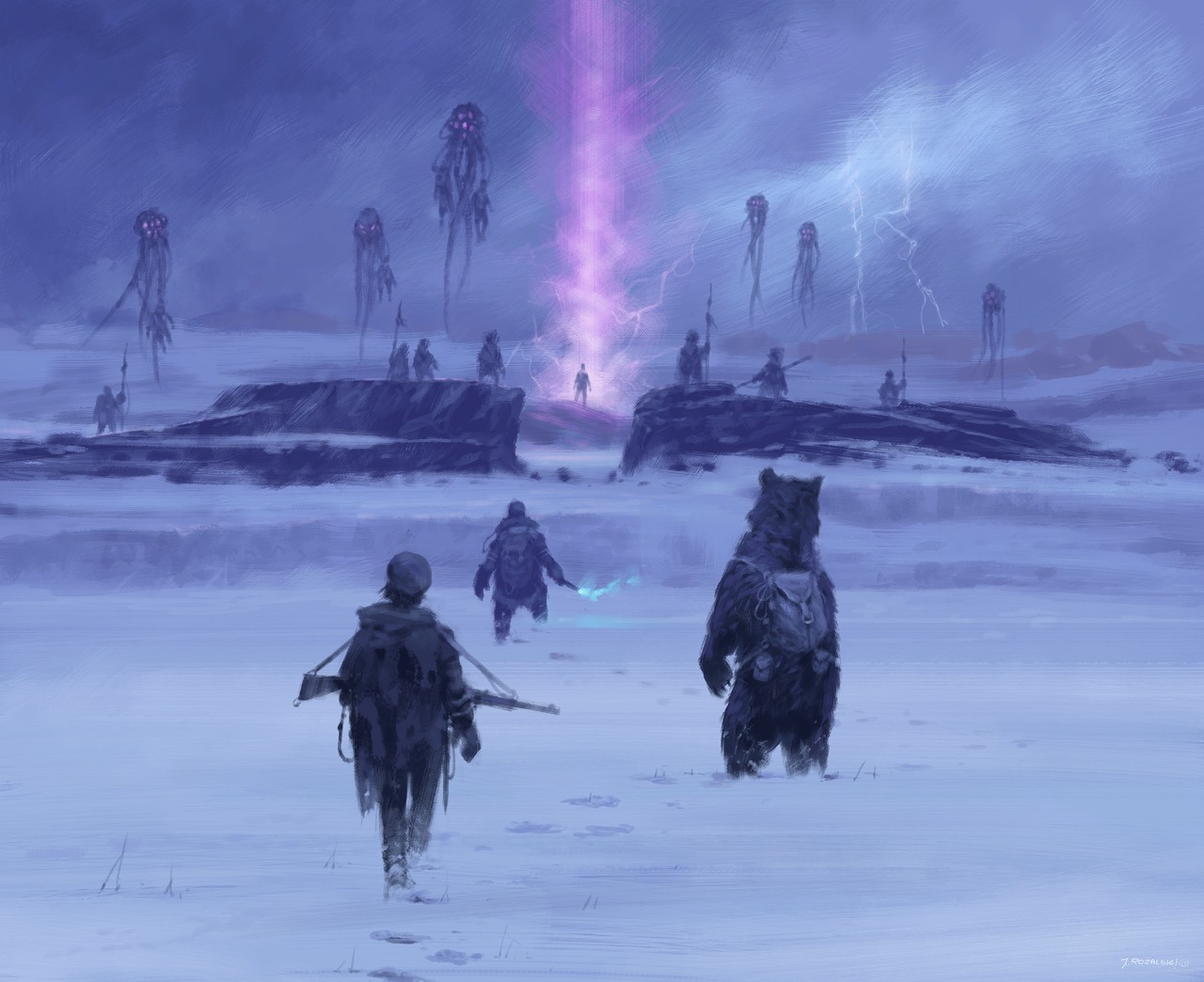
ENG | As an illustrator, what do you like most about your work?
Transferring and creating portals to other worlds for the viewer, and when I say for the viewer I mean, of course, for myself 🙂 And telling interesting stories through my work.
ESP | Como ilustrador, ¿qué es lo que más le gusta de su trabajo?
Transferir y crear portales a otros mundos para el espectador, y cuando digo para el espectador quiero decir, por supuesto, para mí 🙂 Y contar historias interesantes a través de mi trabajo.
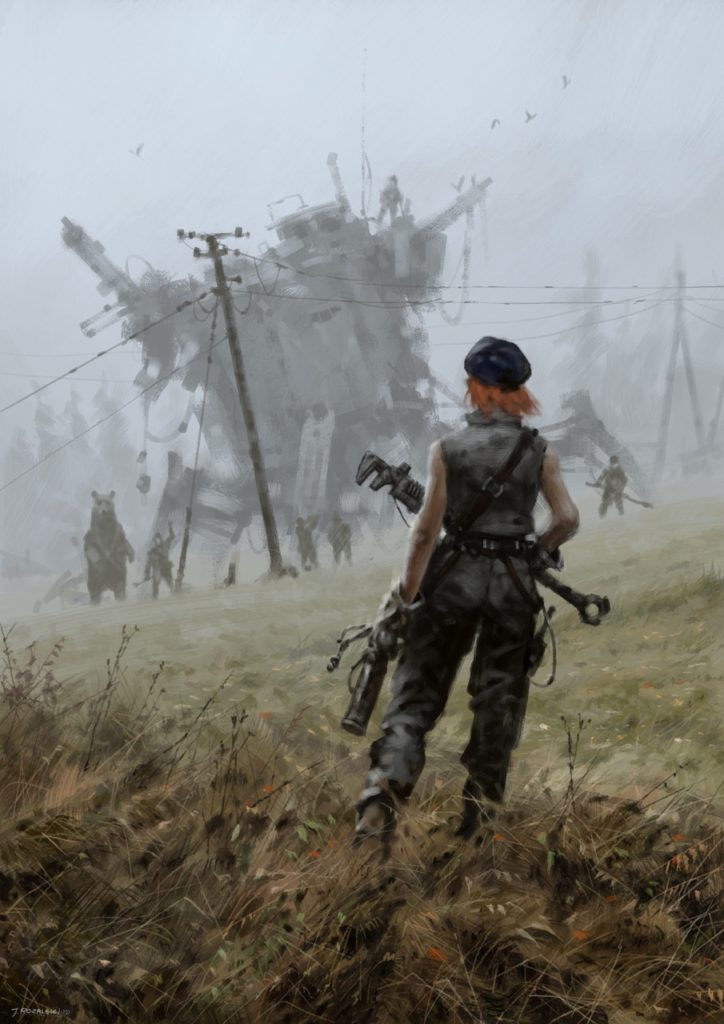
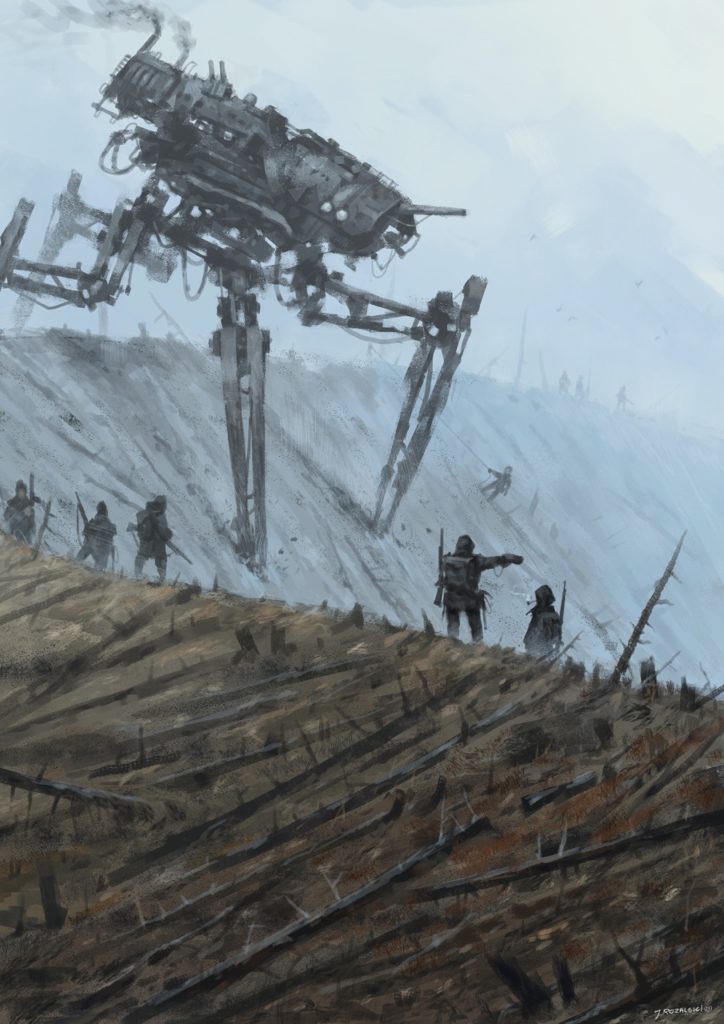
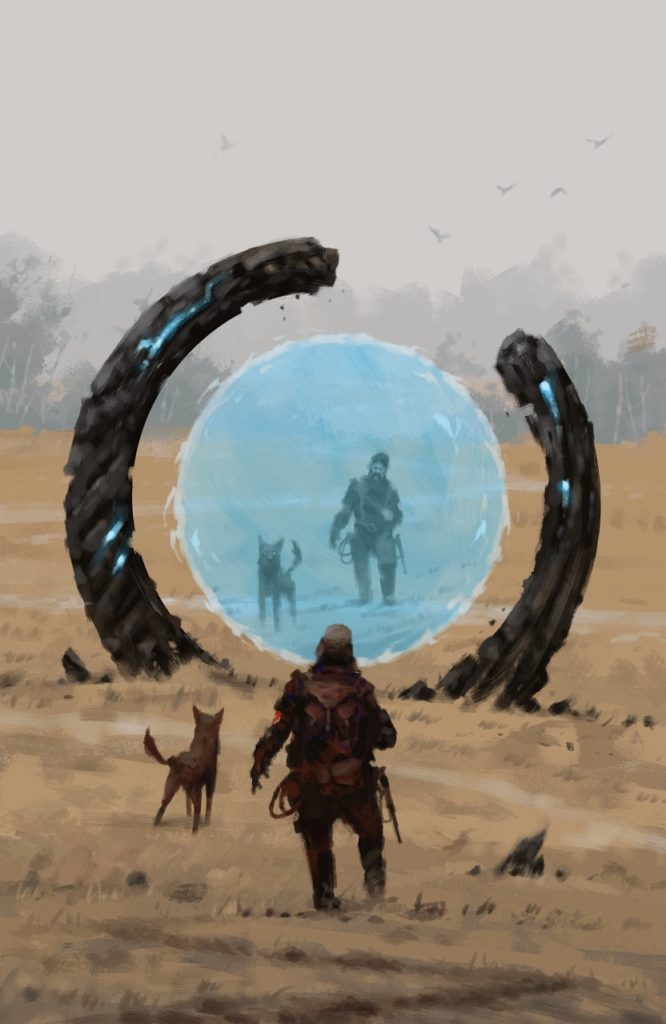
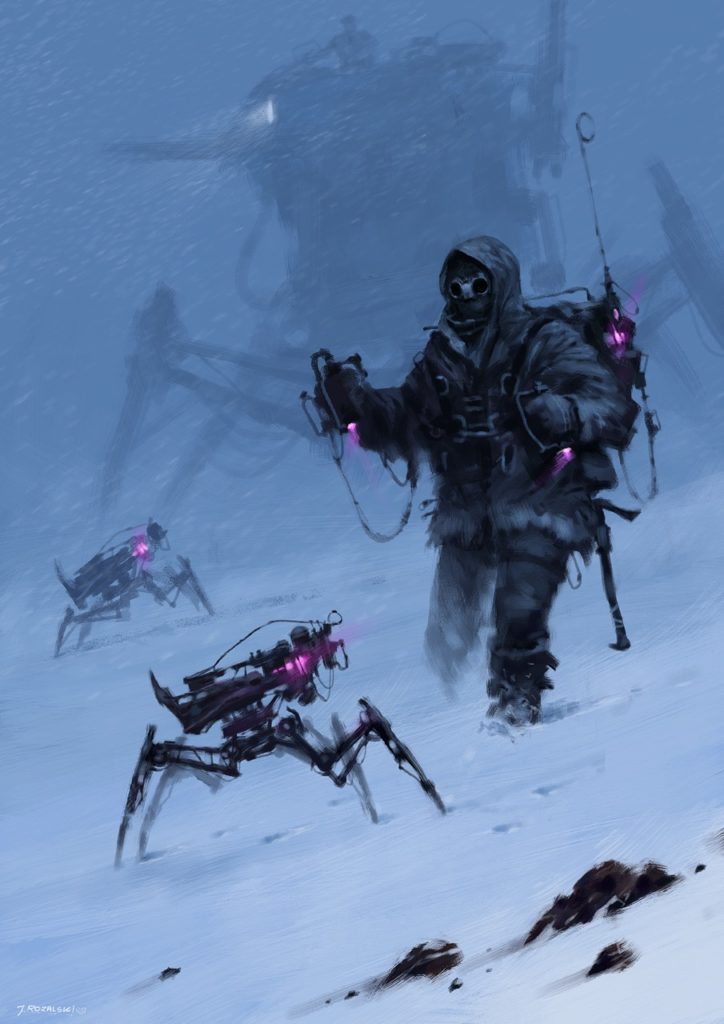
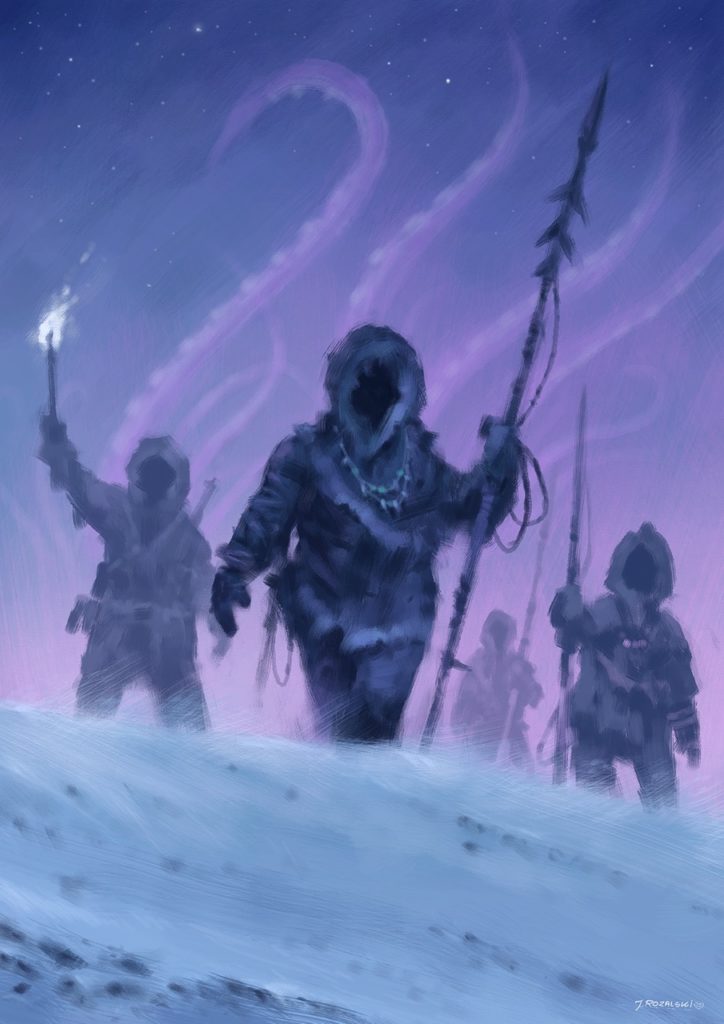
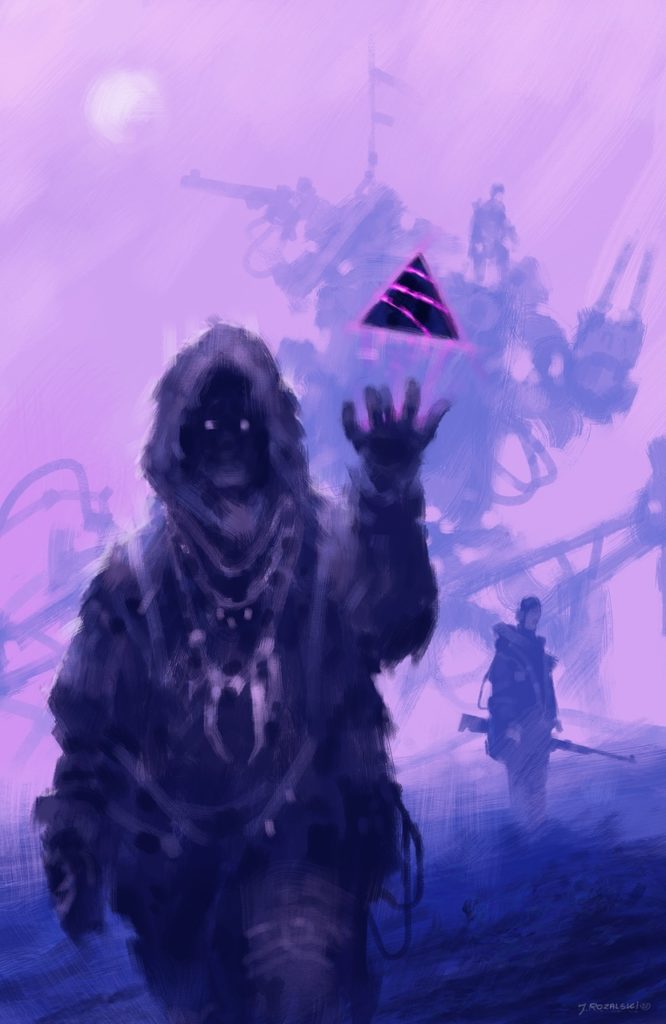
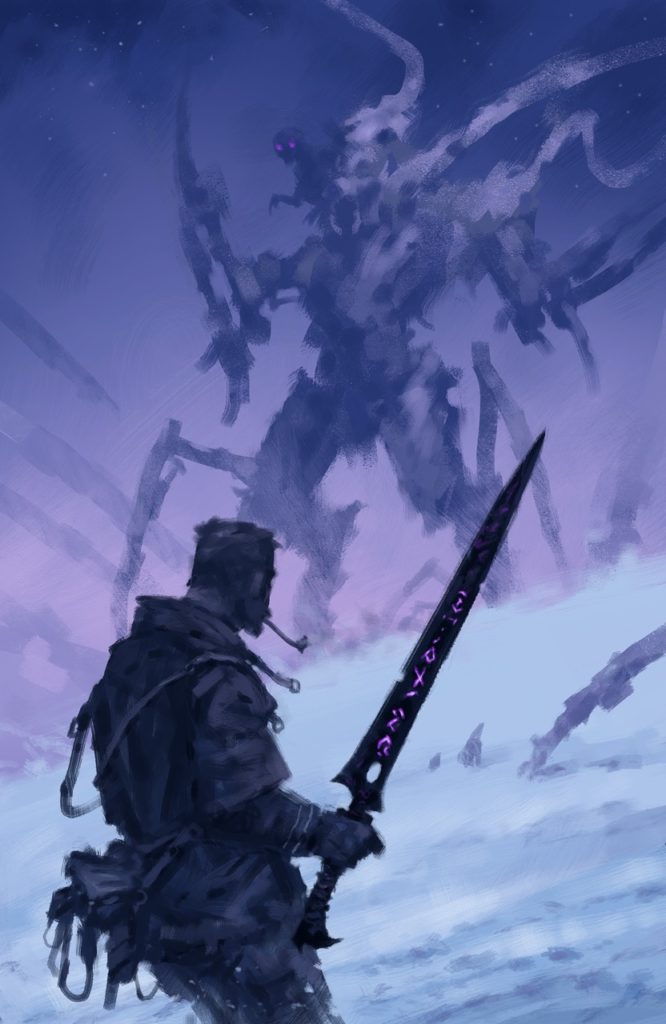
ENG | Finally, what projects are you currently working on and where can we follow your work?
Currently, I would like to take a break from work and spend a little more time with my wife. The last ten years were very intense for me, I worked a lot. Then I’d like to get back to work on Cursed Knight and the new dark-fantasy universe I’m creating. Of course, there are a few more projects I’m working on, but I can’t talk about them yet…
ESP | Por último, ¿en qué proyectos está trabajando actualmente y dónde podemos seguir tus trabajos?
Actualmente, me gustaría tomarme un descanso del trabajo y pasar un poco más de tiempo con mi mujer. Los últimos diez años han sido muy intensos para mí, he trabajado mucho. Luego me gustaría volver a trabajar en Cursed Knight y en el nuevo universo de fantasía oscura que estoy creando. Por supuesto, hay algunos proyectos más en los que estoy trabajando, pero aún no puedo hablar de ellos…
Muchas gracias Jakub 😉
(Todas las imágenes cedidas por Jakub Różalski)

